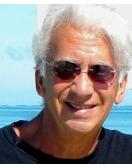Oh, you’ve noticed?
Yes, a pretty common observation from those interested in books and publishing these days. But I’ve got a story about the Great Shift that’s a bit unusual and might shed a different light.
It was 1970—I know, people still lived in caves back then, but stick with me for a moment—a big year for me with the publication of Murder in the Synagogue, my true crime account of the killing of Rabbi Morris Adler in a suburban Detroit temple on Lincoln’s birthday, 1966. An assassination it was called, one of several, you may remember, in those turbulent years.
I had set out to explore the behavior and psyche of a brilliant 23-year-old graduate student—Phi Beta Kappa at the University of Michigan, a Woodrow Wilson Fellow bound for the Divinity School at the University of Chicago—an idealistic intellectual seeker who accused his audience of 700 congregants of being hypocrites and materialists and then turned a gun on the rabbi and himself.
Murder was a window on those riotous 1960s…
One of the hot literary topics at the time was the rise of the “non-fiction novel.” According to my agent, my publisher, Prentice-Hall, saw the book as a kind of Jewish In Cold Blood, and so in the same year that Mario Puzo got $5000 for what became The Godfather, my advance was $8500.
Published, Murder drew positive reviews in often odd, out-of-the-way places like Pomona, CA, and Allentown, PA, and praise from psychiatric experts, religious figures and academics to whom I sent copies. But the eastern literary establishment acted as if it had never heard of it, and sales were slow.
Then from Detroit’s Jewish community…
A remarkable young woman came forward to tell me she had heard a wealthy and powerful man—an influential presidential adviser and top Republican fund-raiser named Max Fisher—tell a group of friends that he had “squelched” my book. Of course I checked her story and eventually learned that Prentice-Hall had indeed bowed to pressure from Fisher and suppressed Murder in the Synagogue. They printed 4000 copies from standing type, which was then pied, or dismantled—the method used for a “limited edition”—and sabotaged its marketing and distribution.
So what did I do?
Like any foolishly high-minded young writer. I went to Prentice-Hall, accused them of undermining my book, then demanded (and secured) its rights. After which I wrote another book, about what had happened to Murder.
Of course, facing a sure-fire, deep-pockets lawsuit from a guy who hung out with the likes of Henry Ford II and Richard Nixon, not one of the agents and publishers I approached would even look at my new book.
My once-budding literary career soon withered…
So in order to move on, I gave away my last manuscript copy of that hopeless expose and then embarked on a busy life as a TV producer/writer/director. Over the ensuing years, my output included more than 50 long-form documentaries, 75 shorter features, 30 live event programs and 600 editorials. Occasionally I still do that kind of work, but I never stopped writing.
And then the world changed…
Digital disruption hit the publishing business, and it may no longer matter what an agent or a publisher will look at. For 30 years I had lost the manuscript of my book about what was done to Murder, but when it came back to me, I brought it up to date and am now offering it as Squelched: The Suppression of Murder in the Synagogue. Also for sale are an ebook version of Murder and 1200 copies of the original hard-cover edition that I’ve kept in a basement all these years.
So why bother with Squelched?
The book was written more than 40 years ago about the publishing problems of another book written a few years earlier? What could such a story have to tell us about the disruption, confusion and uncertainty in the business today? That’s what I’ll take up next time.

